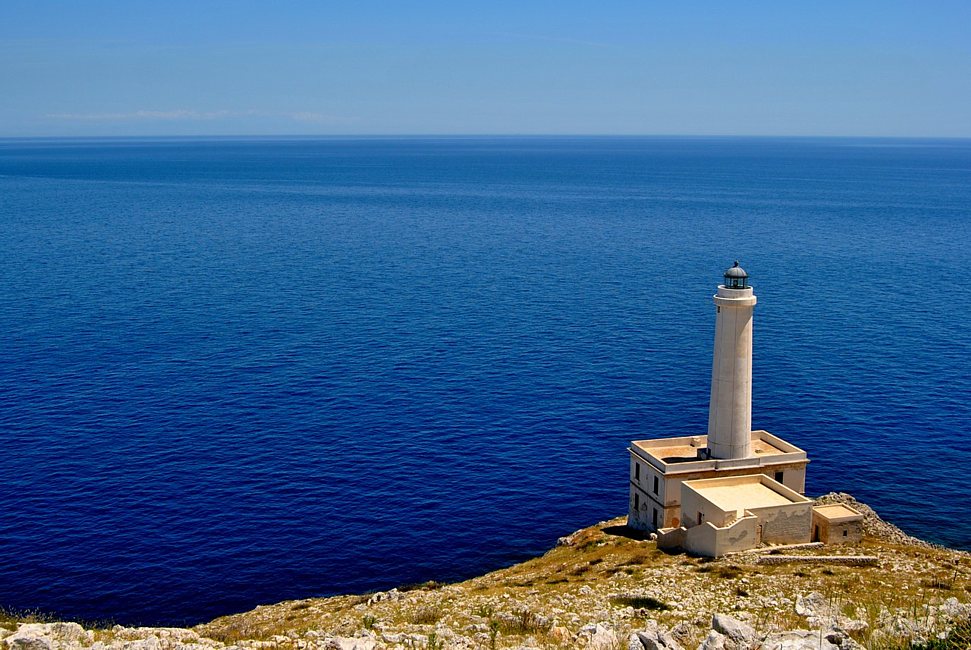Our journey begins in San Foca a delightful seaside centre characterised by its small touristic port which faces the old watch tower. A few kilometres from San Foca is Roca, an ancient village of great beauty and archaeological interest. From there we reach Torre dell’Orso, where you are immediately struck by its beautiful bay, with its sandy beach and pine trees. Continuing n a southerly direction we leave the coast for a short time in order to reach the area of the Alimini (now a protected oasis and nature reserve for Faunistico-venatoria) and for sometime has been developed as an important seaside centre in Salento. Leaving this centre of tourism we will proceed towards Otranto “door to the Orient”.
For its beautiful limpid sea, the colour of its water, its sheer cliffs, the coastline that runs from Otranto to Santa Maria di Leuca, considered to be one of the most suggestive and beautiful in all of Apulia. Fascinating for its spectacular nature which has been able to create the most suggestive and incredible images.
Taking the state road number 173, one will arrive after about 10.5 km from Otranto, to Porta Badisco, a small seaside village well-known for the grotto dei Cervi. The fjord from which Porto Badisco rises is cast headlong into a sea with a thousand reflections, with a high rocky coast and small narrow coves. It consists of a small groups of houses and few but good trattorias which offer freshly caught fish and sea urchins sold from stalls along the roadside. Continuing on our journey along the coast, after about 6km we will reach probably one of the most beautiful places on our itineraries Santa Cesarea Terme, famous above all for the quality of its spa water, but also for its elegant roads and summer houses. The waters, as previously mentioned ,in the curing properties are particularly useful in the treatment of skin and articulation problems, and flow out of four connected grottos one after the other. About a 1km from the centre of Santa Cesarea we will come to Castro, which has one of most beautiful coves along the coast. This is a typical seaside centre carefully placed on the coastline, developed firstly because of its position on the headland and secondly because of its marina. It is divided in two Castro Marina and Castro Superiore. It is well-known for its fascinating grottos which still have traces of their prehistorical inhabitants. From Castro to Tricase the coast road unwinds for a further 17 km, between light slopes to more decisive climbs, with scenery full of lush vegetation, fig trees, oleandri, olive trees and pines. The road passes through numerous small villages including Marina di Marittima and Marina di Andrano, small places with low built white houses, half hidden by trees.
After passing through Marina di Novaglie with il Ciolo, a beautiful fjord, that today is unfortunately crossed over by a bridge, but all in all does nothing to rob it of its great beauty, and after a few kilometres we will finally arrive in Santa Maria di Leuca. Leuca is able to offer incredible scenery , where the sea laps over the thousands of caverns hidden in the rocks, and where bays and fjords offer protection for landing. A quiet Mediterranean locality, as well as offering its natural beauty, is able to offer every comfort for a holiday of your dreams, in entertaining you and helping you relax. There are numerous grottos along this coast with rough stones, worn down by the wind and eroded by the sea.




